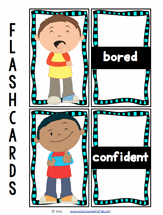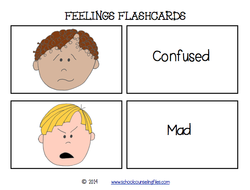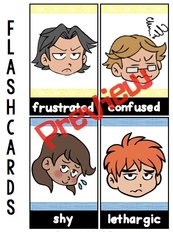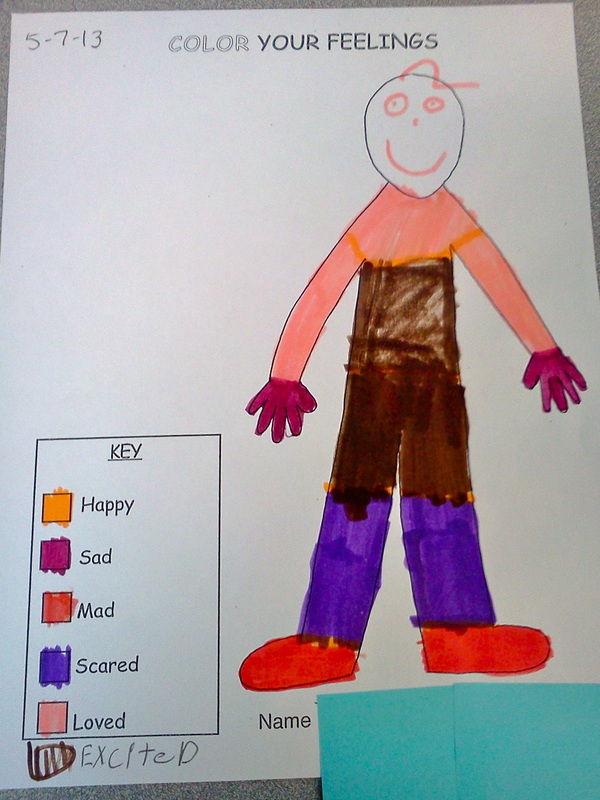General Emotional Literacy Activities
Color the Circles (adapted from Lisa Lowenstein) - This may be done individually or in a group. Present students with a paper with 8 circles drawn on it. Inside each circle is a statement, such as "It is hard for me to talk about my problems." Students indicate how true that statement is for them by coloring in a corresponding percentage of the circle. This can be adapted any number of ways for any number of issues by changing the statements. It would also be a good pre- and post-"test" to see the growth kids have made in counseling. Here's one version to print, here's one related to school behaviors/attitudes, and here's a blank version so you can make your own.
School behavior self-assessment - It's always interesting to see how kids view themselves in school. I designed this little questionnaire when a 2nd grade teacher asked me to do a lesson in her class about responsibility. The questions were a good starting point for our discussion.
School behavior self-assessment - It's always interesting to see how kids view themselves in school. I designed this little questionnaire when a 2nd grade teacher asked me to do a lesson in her class about responsibility. The questions were a good starting point for our discussion.
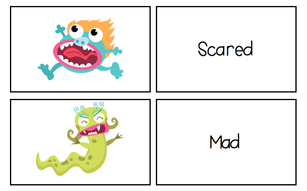
Monster Feelings Flashcards (Free! from my store at Teachers Pay Teachers) - These flashcards of monsters showing 10 common feelings may be used in a variety of ways. Suggested activities are included; the possibilities are almost endless. They are also a great companion to the book Glad Monster, Sad Monster by Ed Emberly and Anne Miranda.
|
I made this set of 19 feelings flash cards, which you can pick up on Teachers Pay Teachers for $2. They come in color and black and white, in case you don't have a color printer. |
|
Color My Life - Give the child a blank piece of paper and a selection of colored pencils or crayons. On one side of the paper, make a "key" where the student picks one color to represent the different feelings he's had in his lifetime (you can either give them a set list of a few basic feelings, or let them make their own list). The other side of the paper represents his life. Since we have feelings all the time, he is to fill up the entire paper, creating an abstract design using the colors he has chosen. He needs to use all the colors from the key in whatever proportion he has felt them in his life. If he chooses yellow for happy and feels like he's been mostly happy in his life, then the majority of the finished design should be yellow. I have younger kids color in a silhouette (right), just because it's less abstract. |
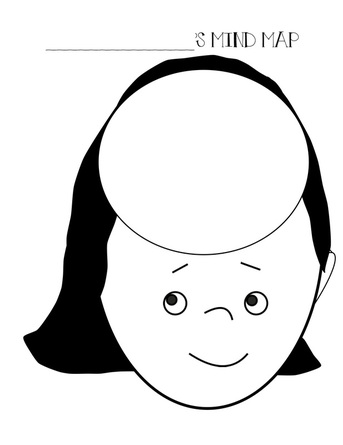
Make a Mind Map - This idea is from Michelle Garcia Winner (Social Thinking). People have different kinds of "smarts:" math smarts, reading smarts, jump-roping smarts, art smarts, computer smarts, etc. Have kids make a map that shows what their biggest (and smallest) smarts are. I talk about "social smarts" with my kids on the autism spectrum and explain that those are the kind of smarts we'll be focusing on in our sessions. You can adjust this for whatever type of issue you want to address. I always make my own mind map with them, to show that I have strengths and weaknesses too (boo, organization smarts!). (Face graphic from Molly Tillyer).
End of Year - Have students write a letter to next year's teacher. For younger students, here's a worksheet I made that has specific prompts they can use.
Draw your feeling face - Read a book about feelings to a group or class of younger students, then have them draw how they're feeling on this worksheet. I use this in Kindergarten classes with How Are You Peeling? by Saxton Freymann and Joost Elffers; The Way I Feel, by Janan Cain; Glad Monster, Sad Monster by Ed Emberly and Anne Miranda; or The Feelings Book by Todd Parr. I don't own it, but Today I Feel Silly: And Other Moods That Make My Day by Jamie Lee Curtis looks like a good one too.
